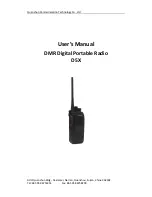
PRIMUS
r
880 Digital Weather Radar System
A28- 1146- 102- 00
Radar Facts
5-24
In prolonged turns, gyro precession can occur that is tracked by the
stabilization system and appears as undesirable ground targets on the
indicator. For example, a 1
°
precession error (which would probably not
be noticed on the gyro horizon) moves the antenna beam
approximately 10,500 feet at a point 100 NM from the aircraft, If ground
targets between 50 and 80 NM depending on aircraft altitude and the
actual setting of the tilt control.
10
5
15
20
AD- 17723- R1@
GMAP
Roll Stabilization Inoperative
Figure 5- 22
Summary of Contents for Primus 880
Page 1: ......
















































